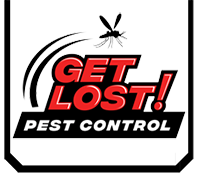Did you know that wharf borers have the ability to cause serious damage? These tiny marine insects may seem insignificant, but their impact on structures and properties can be devastating. In this article, we will delve into the intriguing world of wharf borers, exploring their characteristics, behaviors, life cycle, and habitats. By understanding these fascinating creatures, you will be better equipped to protect your property from their destructive tendencies.
Key Takeaways:
- Wharf borers have the potential to cause significant damage to structures and properties.
- Understanding the characteristics and behaviors of wharf borers can help mitigate their destructive impact.
- Wharf borers have a unique life cycle and specific habitats where they thrive.
- Identifying and managing wharf borers early can save you from costly repairs.
- By taking necessary measures to control wharf borer populations, you can protect both your property and the surrounding ecosystem.
Characteristics and Physical Identification of Wharf Borers
In this section, we will examine the distinct characteristics and physical identification traits of wharf borers. Understanding their features can help you accurately identify these marine insects, ensuring prompt and effective management, if necessary.
Size
Wharf borers typically measure between 5 and 20 millimeters in length. Though relatively small in size, these insects can cause significant damage to wooden structures.
Coloration
Wharf borers have a distinct coloring that aids in their physical identification. Their bodies are usually dark brown or black, with lighter patches along their wing covers.
Unique Features
One of the most distinctive features of wharf borers is their long, cylindrical bodies. Moreover, they possess elongated antennae and segmented legs, which enable them to navigate their wooden habitats with ease.
Another identifying characteristic is their ability to produce a distinct clicking sound. If you listen closely, you may be able to hear this audible signal, which serves as a means of communication among these insects.
To summarize, wharf borers can be recognized by their small size, dark brown or black coloration with lighter patches, long cylindrical bodies, elongated antennae, and segmented legs. Additionally, their audible clicking sound further aids in their identification.
Behaviors of Wharf Borers
Wharf borers exhibit fascinating behaviors that contribute to their survival and ecological role. Understanding these behaviors can help property owners better manage their presence and protect wooden structures. Here are some key behaviors of wharf borers:
- Feeding Habits: Wharf borers are wood-boring insects that primarily feed on wood and other cellulose materials. They typically ingest the wood fibers, breaking them down with the help of digestive enzymes.
- Burrowing Behavior: Wharf borers are adept burrowers and can create extensive tunnel systems within wooden structures. They bore into the wood, excavating galleries and channels for shelter and feeding purposes.
- Interactions with their Environment: Wharf borers are influenced by various environmental factors such as temperature, humidity, and moisture levels. These factors can affect their behavior, growth, and reproduction.
Wharf Borer’s Life Cycle and Habitats
Wharf borers, also known as marine borers, have a fascinating life cycle that involves distinct stages of development. Understanding their life cycle is crucial for effective pest management. Let’s delve into the details of their life cycle and explore their preferred habitats.
Life Cycle of Wharf Borers
Wharf borers undergo a complex life cycle that consists of four main stages: egg, larva, pupa, and adult. Each stage plays a crucial role in their development and survival.
- Egg: Female wharf borers lay their eggs on wooden structures, such as wharves, floating docks, and pilings. These eggs hatch into tiny larvae.
- Larva: The larval stage is the most destructive phase of a wharf borer’s life cycle. Larvae bore into wood, creating long tunnels as they feed on the cellulose and organic matter within. This can weaken and damage wooden structures significantly.
- Pupa: After reaching a certain size, the larvae enter the pupal stage. During this stage, they undergo a remarkable transformation, developing into adult borers within their protective cocoons.
- Adult: Once the transformation is complete, the adult wharf borers emerge from their cocoons and seek new wooden structures to mate and lay eggs, thus continuing the life cycle.
Preferred Habitats of Wharf Borers
Wharf borers thrive in aquatic environments and are commonly found in coastal areas with saltwater or brackish water. They are particularly prevalent in areas with wooden structures submerged in water, such as marinas, docks, and piers. In landlocked regions like Idaho, wharf borers can still be found near freshwater lakes and rivers, where wooden structures are present. These pests are attracted to damp, decaying wood that provides them with a suitable environment for feeding, reproducing, and completing their life cycle.
By understanding the life cycle of wharf borers and their preferred habitats, property owners can take proactive measures to prevent infestations and protect their wooden structures. Regular inspections, timely maintenance, and the use of appropriate treatments can help mitigate the damage caused by these invasive pests.
Conclusion
In conclusion, the world of wharf borers is filled with fascinating facts and behaviors. We have explored their characteristics, behaviors, life cycle, habitats, and where they can be found on your property.
By understanding these marine insects, we can better appreciate their role in the ecosystem. Wharf borers play an important part in the natural process of wood decomposition, helping to recycle nutrients back into the environment.
If you encounter wharf borers on your property and their presence becomes a concern, it is important to take necessary measures to manage them. Consulting a professional pest control service can provide you with effective solutions to mitigate their impact.
Get Lost Pest Control does not treat for woodboring insects, but they do treat for a plethora of other bugs and insects. As well as wildlife control and dead animal removal. Give them a call now at 208-949-1003 or go to their website.



